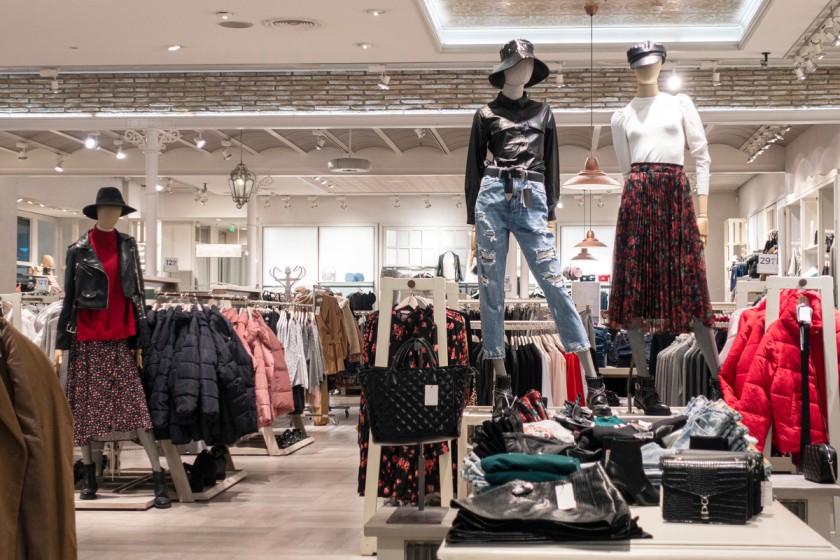How to Navigate 5 Major Challenges in the Fashion Industry



Garment making has flourished and grown for generations, but the apparel industry today confronts large-scale issues that impede economic progress. As fashion and clothes become more open to customers, supply chain bottlenecks and resource-intensive roadblocks get more visible and detrimental to generating consistent income and qualified staff.
Although technology is guiding end-users to the world of fashion, production arms worldwide are still lagging. Considering the worth of global textile markets set to expand rapidly in Asia, effective production control is more important than ever.
Challenges in the garment industry
What have been the fast fashion problems that prohibit firms from ramping up, particularly today when technology has been accepted? Is there, more importantly, a solution that has been proved to function well without spending a lot of money? Let us investigate.
-Inadequate actual production information
Frequently, traditional textile manufacturers require a combination of factual productivity and informed guessing to determine predicted manufacturing output. The apparent absence of large datasets and predictive organizational analytics frequently results in erroneous output predictions, contributing to excess or under manufacturing amounts. When you combine this with a lack of defined monitoring techniques, you get a company uncertain of its potential.
Operators of such enterprises have no option but to operate reactively. This frequently necessitates making significant decisions in real-time, which is not ideal for businesses with limited resources. This is another fast fashion problem.
-Time-consuming manual reporting
The more straight a clothes manufacturing agency's supply chain becomes, the more tedious and difficult it can be to move items ahead quickly. A company that practices the old techniques will frequently be tangled up in getting verbal or written reports handed along from management to management. This out-of-date system generates a "loss in communication" effect that increases the turnover time required before items properly leave the facility.
According to a McKinsey survey, clothing manufacturing takes at least 18 weeks for manufacture and delivery. Think of being capable of cutting it in half and using the time conserved to serve more clients!
-Non-existent employee responsibility

Hundreds of staff may work on procurement, trimming, stitching, and completing workstations, and also packing and quality checking (QC) areas, at any particular plant. These personnel are dispersed around the manufacturing department and prefer to operate as silos, with little interaction outside of their teams.
As a consequence, there is little exchange of knowledge or wider picture thinking inside the company, which affects productivity and adds to a poor working environment. Workers are demotivated, made to feel worthless, and are only concerned with the job at hand. This need for more openness, responsibility, and workplace circumstances is genuine, and the fact is that individuals would like to experience that they are really members of something larger.
-Increased manufacturing flaws
What are the consequences of delayed manufacturing information, manual accounting, and a lack of worker responsibility? You got it: more manufacturing flaws than limits would permit. Production difficulties can go undiscovered for long periods without actual statistics and reliable problem detection and progression mechanism. Wasted raw ingredients, additional staff for sorting, and unanticipated delay due to painstaking correction will certainly result in excess expenses that nibble away expenditures and earnings.
-Obsolescence risk
Like many other industries, fashion is racing to stay ahead of the competition. Why shouldn't AI technology and machine learning be the differentiating factor in mechanized and tech-driven surroundings? AI has been employed in fabric pattern assessment, color comparison, and other uses. A company that continues to use old systems restricts its possibilities for its services and is more likely to fail.
Some other challenges in Fashion Industry

Thousands of retail establishments and shopping complexes are shutting despite the country's economic rise. The retail business has been devastated over the last twenty months, and it has affected everyone – from little shops to major shopping malls. Furthermore, over double as many niche retail establishments have shuttered this year compared to the previous year. But the fact is that after a minor downturn, total retail expenditure continues to expand rapidly. However, various developments, including the development of online shopping, the surplus of shopping malls, and the unanticipated implications of other companies' resurrection, have resulted in the reality that boutique chain stores haven't been doing great. Fashion, as well as boutique retail establishments, encounter a number of obstacles.
- The most typical cause for retail business collapse is online shopping. From 2010 through 2016, digital shopping enterprises' sales increased between $16 billion through $80 billion. The year before, overall sales were around $22 billion. Therefore, in the last six years, online enterprises have more than doubled in size.
- Famous fashion businesses demonstrate their commitment to sustainability and social responsibility. These well-known firms must be seen executing a sustainability plan in order to improve the value of their items. When a label's name is associated with anything negative, it will suffer. Customers are fully informed of how luxury shops operate, and the company must never yield on all these, which may be difficult.
Conclusion
Above all, this global fashion business has faced several fast fashion problems, ranging from large to trivial. The fashion industry is working hard to alter the fashion sector with creative ideas and sustainable measures. To offer the correct goods, the sector must also swiftly react to changing customer behavior.
If you want to know more about fashion, its challenges and want to overcome those issues, please visit Fashinza. Fashinza is a B2B apparel manufacturing platform that can connect you with manufacturers tailored to your personal needs. We take the responsibility from design to delivery, so you can focus on other important areas of your business. Contact us now!



















